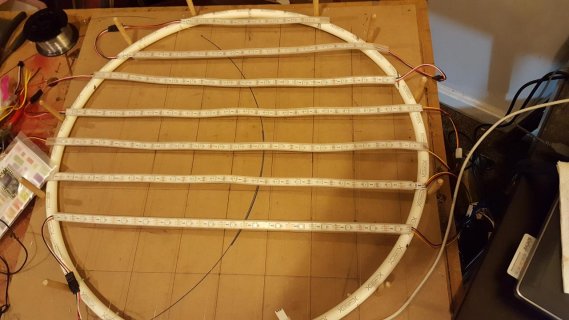Jay Converse
Active member
I'm building a thing with my Teensy with WS2812 strips in a grid, but the grid isn't a regular X by Y square matrix. The pixels will fill a circle. There are 9 strip segments, and from top to bottom the number of pixels on the strips are 8, 14, 16, 18, 18, 18, 16, 14, 8. Technically it's an 18X18 matrix, but the 4 corners have "dead" pixels.
It's looking really good when I hand-code the numbers from an Excel spreadsheet, I can do moving rows, columns, and diagonals, but it's really tedious to code.
I've looked over the OctoWS2811 and Adafruit_NeoMatrix libraries, but they expect a square matrix.
Any ideas?
It's looking really good when I hand-code the numbers from an Excel spreadsheet, I can do moving rows, columns, and diagonals, but it's really tedious to code.
I've looked over the OctoWS2811 and Adafruit_NeoMatrix libraries, but they expect a square matrix.
Any ideas?


